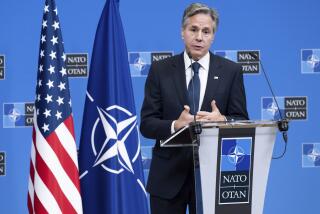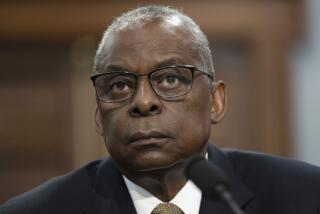Who’ll lead in Asia?
Occasionally, a simple remark reveals far more about the state of American leadership than any speech, policy statement or white paper. During an official visit to Beijing in late May by Lee Myung-bak, the new South Korean president and stalwart American friend, China’s foreign ministry declared the U.S.-South Korea alliance a “historical relic.”
Americans need to wake up to the challenge of leadership and start fighting for it in Asia. That the Chinese are testing one of our closest relationships shows that if we cannot step up, Asia may well make plans for its future without us.
The U.S. government, from the president on down, strains to plead our long-term interests and staying power in Asia. Why is Asia not buying it?
It’s partly because of great changes occurring there, including the rise of China and the maturation of our once-dependent allies. It’s also because of incoherence in our strategic vision. And frankly, it’s about style. When we alternate between “taking charge” and acting detached, we leave our friends questioning our commitment level.
Thanks mostly to generations of soldiers, sailors and airmen, our alliances in Asia give us a head start on the competition. Allies Japan and South Korea are now powerful democracies. The Philippines and Thailand also have become capable members of the alliance family. Australia -- having fought beside us in every conflict of the 20th century -- has proved a most reliable friend.
We also have friends beyond our treaty allies. Taiwan is a natural security partner. Every day it demonstrates the relevance of democracy to the lives of Chinese people. Indonesia, an enormous and diverse nation, is making an inspiring effort to address its problems with the consent of the governed. Malaysia’s democracy is newly robust. Singapore comes as close as we can get to a security alliance without a treaty. And we can occasionally depend on others out of shared interests, if not the bedrock of shared republican values.
In short, the American vision of a free, prosperous and secure Asia is widely shared. Where the burden of leadership gets tricky is how we address the principal challenge: China’s emergence as a major global power. All the players in Asia, including the U.S., have real interests at stake in their relations with China. But China, as currently governed, is on a trajectory to threaten the freedom, security and, one day, the prosperity of Asia.
We ought not fear saying this out loud.
China is massively increasing its military spending and modernizing its weapons. It is expanding land, sea, air and space capabilities. It holds unremitting territorial claims on its neighbors Japan, Taiwan and India and in the South China Sea. It is pursuing close and unapologetic relations with the world’s most odious regimes. And it doggedly adheres to one-party authoritarian rule at home.
We need to rethink our “hedging” strategy -- relying on China to choose democratic reform and peaceful entry into the international system while we plan for alternative scenarios. What we are hedging against -- the rise of a powerful, undemocratic strategic competitor -- is coming to pass. Our rote appeal for transparency has become a way of not believing our own eyes.
Yes, we can partner with China on common interests, but we cannot conceive of it broadly as a “strategic partner.” The gulf between its value systems and objectives and ours is too great. To miss this distinction is to facilitate China’s leadership rather than assert our own.
As for style, we require a diplomacy that takes into account the realities of today’s Asia. U.S. leadership can no longer see our friends and allies as followers but as full partners. They too are worried about China. But they are also worried about our approach. We cannot allow our leadership to be framed as a choice between American-led security and Chinese-fed prosperity.
It will take time for us to build trust in a new leadership model. It will mean a long-term, multi-administration focus on regional priorities and diplomatic initiatives. It may mean new institutions, such as a global freedom alliance, that supplement the tools currently at our diplomatic disposal. We can manage it, but only with the strategic coherence that comes with accurately defining the challenge.
An Asia without our leadership would be bad for the U.S., but it also would be unfortunate for Asia. The U.S. remains the Asia Pacific’s indispensable power. We must lead like it.
More to Read
Sign up for The Wild
We’ll help you find the best places to hike, bike and run, as well as the perfect silent spots for meditation and yoga.
You may occasionally receive promotional content from the Los Angeles Times.






